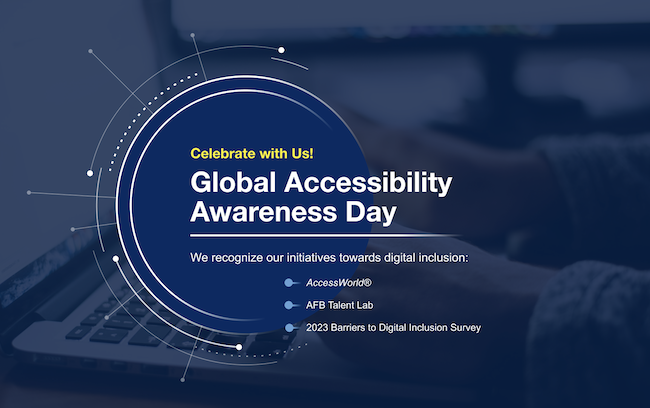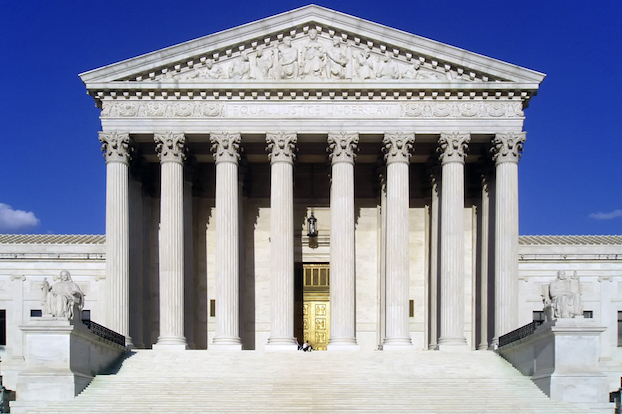The American Foundation for the Blind is concerned that the extensive and rapid downsizing at the US Department of Education could harm the services, funding, and civil rights protections that people who are blind, have low vision, or are deafblind rely on. The Department plays a critical role in enforcing rights and funding services required by the Individuals with Disabilities Education Act (IDEA) and the Rehabilitation Act. In 2021, more than 7.7 million children received services through IDEA.
Members of AFB’s Public Policy team joined leaders in the technology and workforce space to share how AI could affect workers with disabilities at the first AI Skilling Fair held by the AI Workforce and Skills Roundtable and House Taskforce on AI. AFB’s Senior Advisor of Public Policy & Research, Sarah Malaier, spoke during the briefing and shared her thoughts after the event.
Today marks the 13th anniversary of Global Accessibility Awareness Day (GAAD). In celebration of GAAD, I want to highlight the direct impacts on digital inclusion and accessibility that we at the American Foundation for the Blind (AFB) have achieved over the past year.
We at AFB are thrilled that the U.S. Department of Justice (DOJ) published its final rule on website and mobile application accessibility this week. This rule is the culmination of decades of advocacy and rulemaking and marks a significant step in ensuring that the digital environment is fully accessible to people who are blind, have low vision, or are deafblind.
On this 33rd anniversary of the Americans with Disabilities Act (ADA), we at AFB are thinking of all the ways that technology plays in role in meeting the expectations of this valuable and groundbreaking civil rights legislation. Thanks to the ADA, we have come to expect equality and access in every part of public life. Truly, people who are blind or have low vision have greater access to jobs, businesses, life in the community, and government services because the ADA prohibits discrimination on the basis of disability.
On Friday, May 19, the Department of Justice (DOJ) Civil Rights Division and the Department of Education Office for Civil Rights (OCR) issued a Joint Dear Colleague Letter on the participation of people with disabilities in online activities made available by colleges, universities, and other postsecondary institutions.
(EDITOR’S NOTE: We wanted to share an important post from the National Disability Rights Network (NDRN), who is collecting valuable stories to assist in a national coalition to make the internet fully accessible. Your story can help make a real difference. Please take time to read and share widely.)
Just as the flowers bloom and come to life again in Washington, D.C., Springtime often brings a flurry of activity from the federal government. Our Public Policy Research Institute (PPRI) has been tracking the activity, and would like to share two key recent actions that have taken root and could yield positive fruit for people who are blind or have low vision.
July is Disability Pride Month, and we know many have been excited to reconnect with colleagues and friends at the National Federation of the Blind and American Council of the Blind conventions. Here are a few recent stories we have been reading with particular interest.


